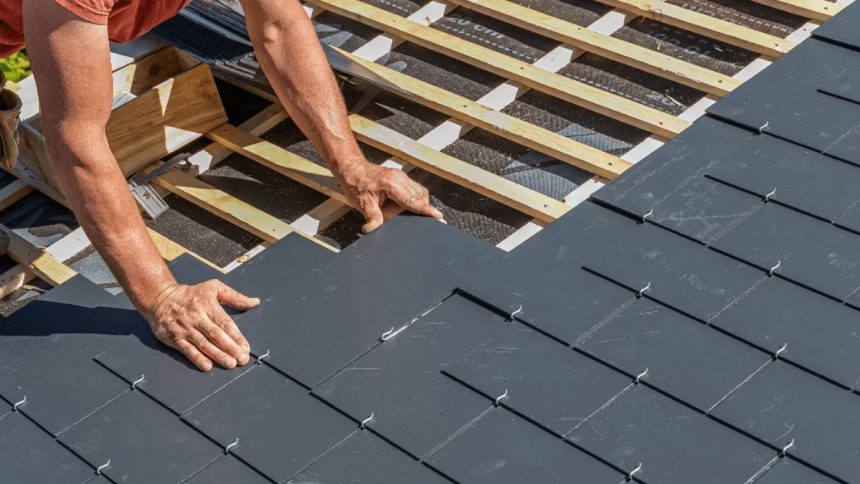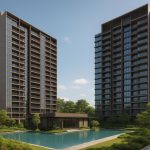When embarking on a commercial roofing project, one of the most crucial decisions you’ll make is choosing the right materials. There is a wide array of industrial roofing materials available to cater to the varied requirements of commercial buildings.
Whether you’re located in Pensacola or elsewhere, having knowledge about these materials is crucial for the accomplishment of your project. In Pensacola, Florida, where weather conditions can be unpredictable, selecting the appropriate Pensacola roofing material becomes even more critical. Factors like resistance to wind, rain, and humidity play a significant role in determining the performance of your commercial roof.
Whether you’re embarking on a fresh installation or strategizing a Pensacola roofing project, it’s vital to thoroughly evaluate the advantages and disadvantages of each material option. By consulting with roofing professionals and considering factors like cost, durability, and maintenance requirements, you can make an informed decision that aligns with the unique needs of your commercial property.
Built-Up Roofing (BUR)
Built-Up Roofing (BUR) is one of the types of commercial roofing material composed of several layers. These layers typically include asphalt-impregnated felt or fabric alternating with layers of bitumen, which can be either asphalt or coal tar. In many cases, a BUR roof’s uppermost layer is finished with gravel or mineral granules.
A significant benefit of BUR roofing systems lies in their robustness and extensive lifespan, making them an excellent choice for the low-slope or flat roofs prevalent in commercial structures. BUR roofs are known to withstand foot traffic and extreme weather conditions, making them a reliable choice for commercial roofing projects.
Installation of a BUR roof typically involves a multi-step process, including the application of alternating layers of bitumen and reinforcement materials, followed by the placement of the protective surfacing. While BUR roofs may require more labor-intensive installation compared to some modern roofing systems, their longevity and performance make them a cost-effective choice in the long run.
Regular maintenance is important to ensure the continued effectiveness of this roof type. This may include periodic inspections, repairs to damaged areas, and reapplication of protective coatings as needed. With proper care and maintenance, a BUR roof can provide reliable protection and peace of mind for many years to come.
Modified Bitumen Roofing
Modified Bitumen Roofing is another commercial roofing material types. It is crafted from asphalt-based materials that have been enhanced with polymers, providing them with extra flexibility, strength, and resistance to UV rays.
These roofing systems come in rolls or sheets and are installed using either heat or cold adhesives. One of their key advantages is their exceptional waterproofing capabilities, making them ideal for low-slope and flat roofs commonly found in commercial buildings.
Moreover, modified bitumen roofs are recognized for their resilience and capacity to endure diverse weather elements, ensuring prolonged shielding for commercial premises.
Single-Ply Membrane Roofing
Single-ply membrane roofing is an industrial roofing material crafted from synthetic materials like TPO, PVC, and EPDM, tailor-made for commercial roofing needs. These membranes boast lightweight construction, flexibility, and straightforward installation, making them a favored option for commercial structures.
TPO and PVC membranes excel in shielding against UV rays and conserving energy, while EPDM stands out for its tough durability and resilience against various weather conditions.
TPO membranes are known for their excellent heat-welding capabilities, making them easy to install and ensuring seam strength. PVC membranes, on the other hand, provide enhanced flexibility and resistance to punctures and tears, making them ideal for buildings in high-traffic areas.
Overall, Single-Ply Membrane roofing systems offer sturdy, dependable, and energy-saving alternatives for commercial and industrial structures. With proper installation and maintenance, these roofing systems can offer long-lasting protection and performance, ensuring the safety and comfort of building occupants for years to come.
Metal Roofing
Metal roofing stands out as the most common commercial roofing material, offering an array of benefits beyond durability. Its lightweight design simplifies installation, cutting down on labor expenses and project durations.
Moreover, metal roofs are eco-conscious, often incorporating a substantial portion of recycled content and being entirely recyclable once they reach the end of their usage.
Furthermore, metal roofing reflects solar heat, contributing to energy efficiency and potentially lowering cooling costs for commercial buildings. With its ability to withstand the test of time and provide superior protection, metal roofing remains a top choice for industrial applications.
Roof Coatings
Roof coatings are not only beneficial for preserving the structural integrity of roofs but also for enhancing their aesthetic appeal. With a wide range of colors and finishes available, building owners can choose coatings that complement the overall design of their commercial properties.
Additionally, these coatings can be customized to meet specific requirements, such as increasing solar reflectivity or improving waterproofing in areas prone to heavy rainfall.
Furthermore, the application of roof coatings is a cost-effective alternative to complete roof replacement, saving both time and money while extending the life of the existing roofing system.
Green Roofing
Green roofing entails the incorporation of vegetation and growing substrate on the roof, delivering a plethora of ecological and financial advantages. Notably, green roofs boost energy conservation, alleviate stormwater overflow, counteract urban heat island phenomena, and promote biodiversity.
Despite the necessity for added structural reinforcement and upkeep, green roofs present enduring sustainability benefits alongside aesthetic enhancements.
In addition to the mentioned benefits, green roofing fosters a healthier urban environment by purifying the air, absorbing carbon dioxide, and reducing noise pollution.
Furthermore, the presence of greenery on rooftops contributes to improved air quality and temperature regulation, creating a more comfortable and pleasant living environment for occupants. Moreover, green roofs serve as habitats for birds, insects, and other wildlife, fostering urban ecosystems and promoting biodiversity conservation.
Conclusion
In conclusion, the choice of roof type is a critical decision that impacts how your roof functions and appears to be. Whether opting for traditional materials like asphalt shingles or embracing innovative solutions such as green roofs or metal roofing, each option offers unique benefits and considerations.
By carefully evaluating factors such as durability, energy efficiency, environmental impact, and budget constraints, property owners can select the roof type that best suits their needs and priorities. Ultimately, investing in the right roof type ensures long-term protection, sustainability, and satisfaction for years to come.
Lynn Martelli is an editor at Readability. She received her MFA in Creative Writing from Antioch University and has worked as an editor for over 10 years. Lynn has edited a wide variety of books, including fiction, non-fiction, memoirs, and more. In her free time, Lynn enjoys reading, writing, and spending time with her family and friends.















